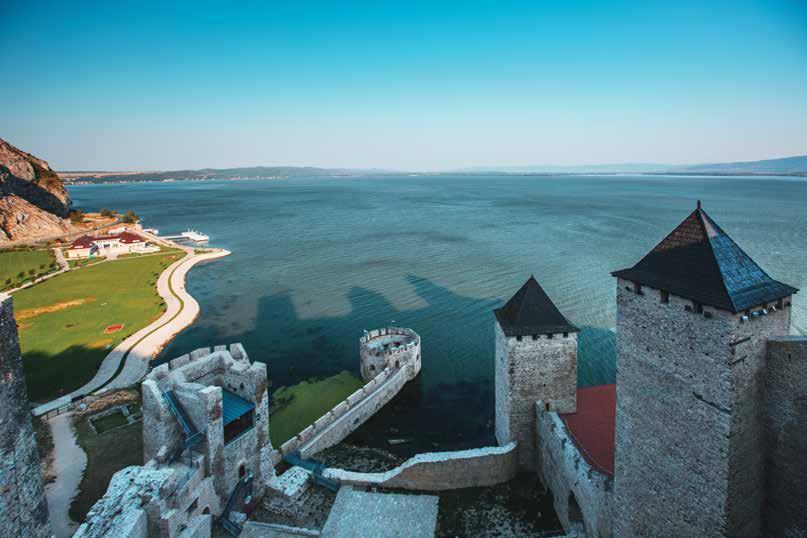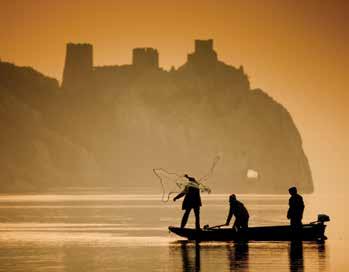Danube in S er bia

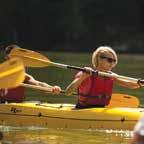


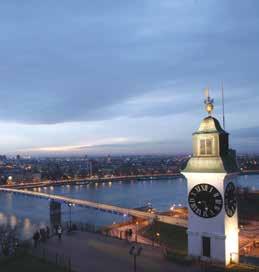









Total length: 2,783 km
Navigability: 2,414 km (from Kelheim)
Connecting 10 countries: Germany, Austria, Slovakia, Hungary, Croatia, Serbia, Romania, Bulgaria, Moldova and Ukraine
Connecting four capitals: Vienna, Bratislava, Budapest and Belgrade
The Danube is the only of large European rivers that flows from west to east. Its source is still subject of scientific debate, while its mouth widens year-in-year-out. Throughout its history, the river had a major role as a link and as a border, as the lifeblood of commerce, but also the scene of wars and conflicts.
The river’s name comes from the Latin name Danubius, which has its roots in the ancient Greek word meaning the river of Zeus or “heavenly bliss”. The second part of the coinage comes from the word “bios”, which means life – especially human life.
The Danube in the ancient writings is also called Istros – which means a breadwinning river. The Danube river basin region is today inhabited by more than 100 million people. After the Volga River, it is the largest river in our continent, linking ten countries, four capitals and many regions.
That is why the journey along the Danube is like a visit to a mu seum of European history, filled with “exhibits” of natural rari ties, deep layers of cultural heritage, colourful lifestyles, events, tourist offers and attractions.
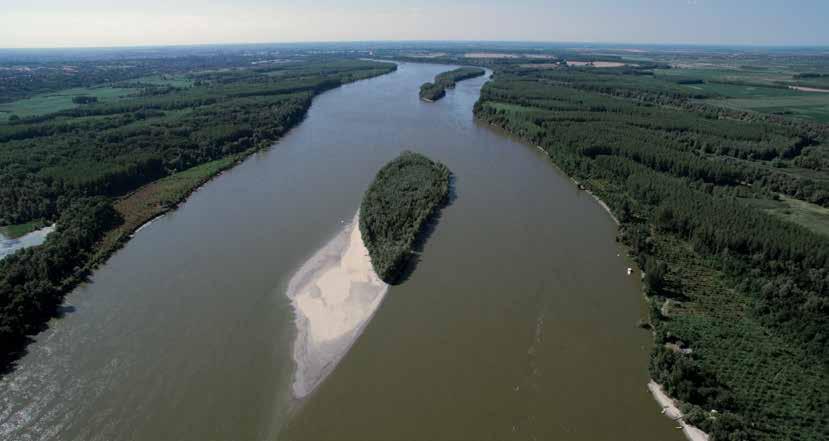
From spacious Bačka plains to the stunning Đerdap gorge (Iron Gate), the Danube in Serbia flows through extremely diverse landscapes. The water route 588 kilometres long has the scenes constantly alternating: dense forests and marshes of the Special Nature Reserve Gornje Podunavlje, sandy shores and river islands, lush fields, the silhouette of the mountain range of Fruška Gora, the landscape of vineyards and orchards, the loess ridges and backwaters, the outlines of the Deliblato Sands – the only desert in Europe... The Danube makes its biggest transformation on its way to the Black Sea near Golubac, when its vast and spilled waters sink into the gorges of the Carpathian Mountains. The journey along the Đerdap gorge (Iron Gate) is a unique experience filled with admiration for the mighty river that, on its way, creates a “rhythmic” composition of ravines and valleys. In the eye of the beholder remain the views of the cliffs, forests and glades that frame the journey down the river.
The cultural heritage is equally varied and even more exciting: on the banks of the Danube the glorious culture of Lepenski Vir eight millennia old emerged, as well as the Vinča culture which, among other things, left a prehistoric metropolis, Vinča, as well as Rudna Glava – the oldest copper mine in the world. Traces of the Celts, Romans, Byzantium, the first Slavs, the medieval Serbian and Hungarian state, the Ottoman Empire, the Austrian Empire and the modern Serbian state reveal to the traveller a rich historical fabric of the region.

Length: 588 km
Navigability: in its whole length River’s area: 102,350 km²
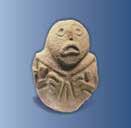
The largest width: 7 km (near Golubac)
The smallest width: 150 m (Đerdap gorge / Iron Gate)
Maximum depth: 90 m
Main tributaries: Tisa, Sava, Tamiš, Velika Morava, Mlava, Timok National parks: Fruška Gora and Đerdap Dams: Đerdap I and Đerdap II
Capital: Belgrade (1.6 million inhabitants); Novi Sad, the capital of the Autonomous Province of Vojvodina (330,000 inhabitants)
Other towns and cities: Smederevo, Veliko Gradište, Golubac, Donji Milanovac and Kladovo

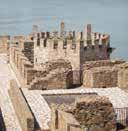

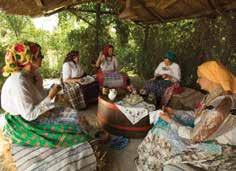
Did you know...
...that the painting “Battle of Senta” by Ferenc Eisenhut exposed at the Sombor County building is the largest oil painting in Serbia?
...that Sombor with its 120 km of the avenue is the greenest city in the country?

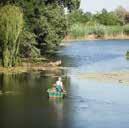
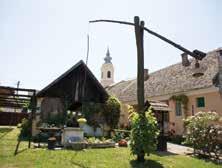
...that in the church of the Assumption of Mary in Apatin there is a unique statue of the Black Madonna?
The journey along the Danube in Serbia begins with the landscapes of the Nature Reserve Gornje Podunavlje. Beyond the horizon of dense vegetation and giant forests lies one of the last oases of wildlife of marshes and wetlands. In the space traversed by the backwa ters and reeds, in their natural environment there live herds of deer and a colourful world of birds: white-tailed eagle – the largest eagle of our continent, wild geese, herons, rare black storks... In the interior spread the “carpets” of white and yellow water lilies making these landscapes literally unreal. Behind the flood zone of the river, there is the densely populated Bačka plains with Sombor in its centre. Sombor is encircled by farms and small villages, and down the stream, on the banks of the Danube lie two picturesque towns: Apatin and Bačka Palanka.
Sombor is located just off the coast of the Great Bačka canal. Sail on a raft to Bezdan, where you can visit the ship lock dating from the 19th century designed in the Eiffel office and where you can learn about the fascinating history of how the largest canal in the Danube region was built. Stop off at Bački Monoštor – the centre of ethno and eco tourism and visit fish restaurants on the banks of the canal and the Danube, where the superb fish stew is cooked. Take a break at one of the famous Sombor farms and, along with the music of tamburitza players, enjoy in the taste of a rich Bačka table. You can get to know Sombor and its beautiful surroundings while riding on the carriage – which is one of the symbols of the city’s tourist offer.
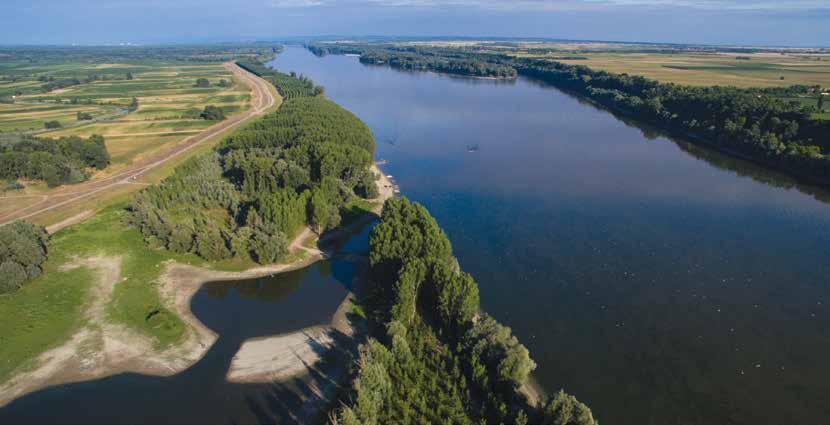 Sombor farm
Bački Monoštor
Sombor farm
Bački Monoštor
Sombor
The capital of Western Bačka District is a stylish city with unique historical core called Venac. The edifices of the County Building and the City Hall give the city an architec tural seal, as well as spacious pedestrian zone of the Main Street. The city has some exceptional cultural offers: the Gallery of Milan Konjović, the City Museum and one of the most beautiful theatre buildings in Serbia. The Saint George Orthodox Church, Roman Catholic Church of the Holy Trinity and the Church of Saint Stephen the King embellish the city’s three main squares.. A view of the domes, church towers and expansive horizon surrounding the plains is truly striking.
This lovely small town on the Danube recently celebrated its thousandth birth day! Its architectural symbols are the Town Hall from the 19th century, the Ro man Catholic Church of the Assumption of Mary and the Orthodox church of the Holy Apostles. The residents of Apatin are known as skilled fishermen, masters for fish stew and beer production. It is worth visiting the old building of the Apatin brewery, which is now one of the major breweries in Serbia. The town recently became a centre of nautical tourism, with a modern marina and a pier for large cruise ships.

Special nature reserve Karađorđevo is known as an exclusive hunting and horse farm. Not far from the reserve, there is a historically interesting town of Bač with the remains of a medieval fortress by which the whole region got its name. In the immediate vicinity of Bač, worth visiting is the monastery of Bođani (15th century) with exquisite frescoes by Hristifor Žefarović.


This town is known for its beautiful sandy beaches, including the most famous ones “Tikvara” and the “Town Beach”. When you get here, you should definitely visit the Museum, as well as the nearby Dunđerski castle in Čelarevo. A tourist attraction of the town is the “Guinness pot”, in which the biggest fish stew in the world was cooked.
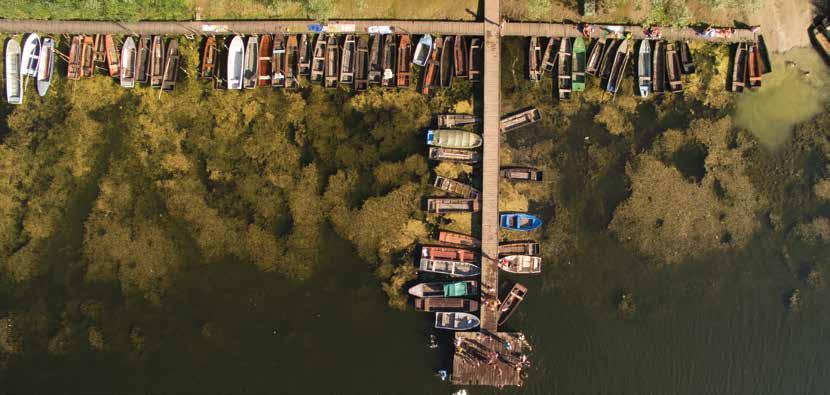 Bač Fortress
Sombor
MUST SEE AND VISIT
Bač Fortress
Sombor
MUST SEE AND VISIT
The mountain of Fruška Gora and the national park of the same name peculiarly rise over the Danube River and the surrounding plains. At its gentle slopes there are centennial deciduous forests and endless fruit plants. There are beehives lined up in the linden forest, the largest in Europe, from which honey is produced, and on its slopes there is the famous Fruška Gora vineyards with a tradition two millennia old. The geological history of the mountain is fascinating: there are fossils of shells, snails, corals discovered in its sediments... testifying that it was a lonely island in the midst of the long-vanished Pannonian Sea. With its natural rarities, Fruška Gora is a treasure trove of cultural heri tage: in its space there is a small “Orthodox universe” comprising a total of sixteen monasteries, which is why this place is called by the name North Mount Athos.

One of the places we recommend is Vrdnik Spa, located in the southern, “sunny side” of Fruška Gora. Medicinal thermal waters, in harmony with the clean air and relaxation treatments, rejuvenate both body and spirit. While in Vrdnik, visit the Ravanica Monastery (16th century) and the Roman site Vrdnik Tower.

The nearby small town of Irig is famous for its excellent wine cellars and plantations of fruit – particularly apple plantations. From Irig, you can quickly get to the monasteries of Grgeteg (15th century) and Krušedol (16th century). We also recommend you several tours that are on offer at the National Park: an eco-tour themed geological history, wildlife observation and bird watching. In the National Park there are some extremely agreeable picnic areas and over 500 kilometres of marked trails. Be sure to visit some of the belvederes. We recommend an unforgettable view from Iriški Venac located in the heart of Fruška Gora.
...that the name of Fruška Gora comes from old Slavic word Frug, thereby giving the meaning to the name of the mountain: the mountain of the Franks?
...that the monastery of Krušedol is endowment of the last Serbian ruler Đorđe Branković?
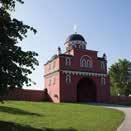
...that premium wines from Fruška Gora, except in cellers, can be tried in the monasteries and villages of Čerević, Neštin, Banoštor, Erdevik?
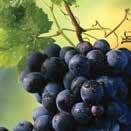
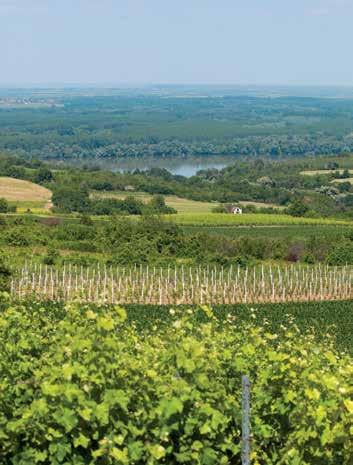
Because of the leading role it played in the religious, educational and political life of the Serbs in the Austrian Empire, it took the title of an Orthodox Zion. Its progression began in the 18th century, when it became a diocesan seat of the Serbian church. The town is the seat of the first Serbian gymnasium, the first seminary, the first students’ dormitory... Here, from the balcony of the Magistracy, the Serbian duchy was proclaimed in 1848. It was in this small town where a long-standing war between Austria and Turkey was terminated and where many important, even decisive chapters of Serbian history were written. The vine-growing tradition is equally famous: wines from this region were tasted at the Viennese court, across the noble Europe and even in America. The Karlovci wines have preserved a good reputation to date.
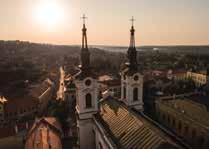
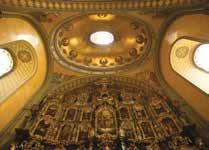

The Patriarch’s Palace is one of the most beautiful bishop’s palaces in Serbia. Inside the palace there is the Chapel of St. Dimitrios and the Treasury with seven chambers where there are icons, portraits, rare manuscripts, old printed books exposed... Visit the court gar dens and the nearby Cathedral of St. Nicolas – a masterpiece of baroque architecture. A “ritual” for tourists is drinking water at the fountain Four Lions, because it is believed that whoever tastes this water in Karlovci will always return there. The map of landmarks also includes the Roman Catholic Church of the Holy Trinity, the Gymnasium and the Chapel of Peace, erected at the place where the Karlovci peace accord was concluded.
Wine roads will take you to the famous family cellars where you can taste wines. A real specialty is the dessert wine Bermet, that is prepared with medicinal and aromatic herbs. The town is also home to an interesting Museum of Beekeeping.
...that the peace talks between Austria and Turkey, that were ended by the Treaty of Karlowitz of 1699, were held for the first time in the history of diplomacy at a roundtable?
...that the famous Serbian scientist Nikola Tesla particularly appreciated Bermet wine and thought that it stimulated the intellect?

...that Novi Sad got its name in 1748 when wealthy residents of Racka town – as the city was called back then – went to Vienna, and for a sum of 80,000 Rhine forints purchased from Empress Maria Theresa the status of a free royal city?
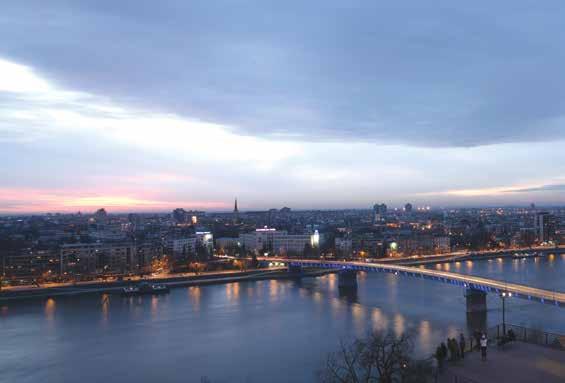
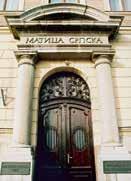

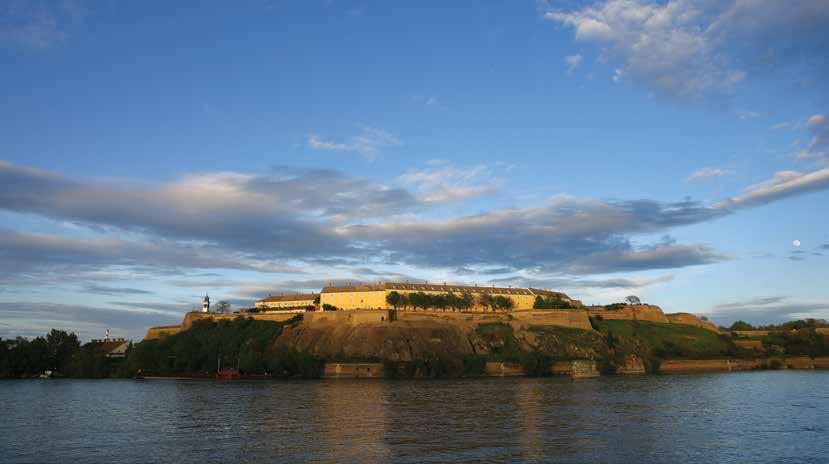
...that Marija Popović Trandafil – the great Serbian endower – erected the City Department for Orphans because she was poor for only one day in her life?
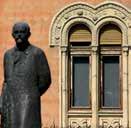
...that a small island on the lake in the Danube Park is named after AustroHungarian Empress Erszebet and that there is a willow tree rising there in memory of the tragic end of the beautiful empress?
The architecture and the spirit of Novi Sad have been shaped by many a nation. Its harmo nious urban core, casual atmosphere, cultural offer and natural surroundings have made it a magnet for tourists. It is the capital of the province of Vojvodina and the second one in Serbia by the population number. Owing to a leading intellectual role that the city played in the creation of the modern state, it bears the name Serbian Athens, while due to an exceptional strategic position on the Petrovaradin fortress built on a rock above the river it is also referred to as the Gibraltar on the Danube. At the beginning of the 21st century, thanks to the interna tional music festival EXIT, it took the title of a youth capital. The Danube, connecting two parts of the city, gives it the strongest seal, symbolically representing “the city’s main boulevard.”
The Liberty Square in the urban core is the starting point for every sightseeing. The space astonishes with its breadth, dominated by the City Hall, the Catholic Cathedral “Name of Mary” and the monument to Svetozar Miletić – the fighter for national rights of the Serbs in the Austro-Hungarian monarchy. From here, continue walking down to the city’s shopping artery, Zmaj Jovina and Dunavska streets. The façades of warm colours add on a special tone to the pleasant atmosphere in the pedestrian zone. The intersection of these two streets is decorated by the Bishop’s Palace building and the Orthodox Congregational Church of Saint George. Visit the Square of Marija Trandafil, where the seat of the famous and oldest Serbian institution of culture, Matica Srpska, is located. Take a break at the well-maintained Danube park and search for a small Laze Telečkog street, where cafés and clubs are stringed one after another and where good fun is guaranteed.
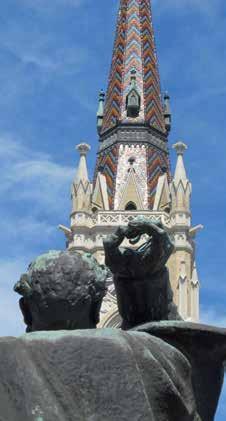
The Petrovaradin fortress throughout history was a gate on the border between civilisation and the barbaric world, Christianity and Islam, the Balkans and Europe. It is the best preserved baroque fortress in Europe and a masterpiece of the famous French military architect Sébastien Vauban. Of imposing size, the fortress spans over 112 hectares! Stroll down its walls and be sure to visit the plateau beside the Clock Tower which offers a panoramic view of the city. Visit the City Museum and one of about one hundred art studios. A tour of the labyrinthine underground military galleries, that by their complex structure and size are unique in the world, will offer you an unforgettable experience.
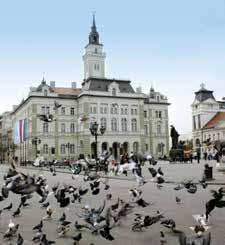
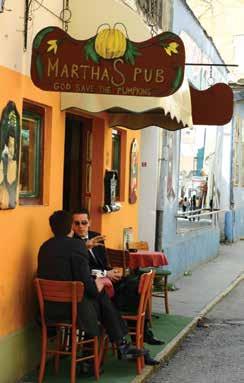
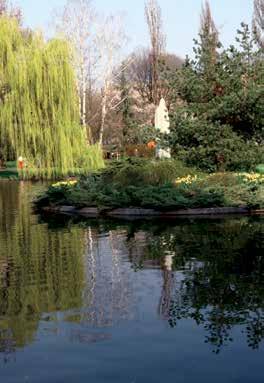
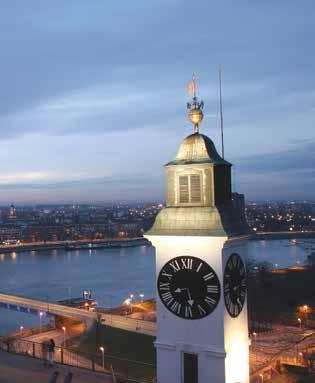

The Fisherman island is a tourist destination with taverns and restaurants preparing mainly fish courses. Visit this oasis of peace and try the already confirmed specialties of the fisherman’s cuisine. A beautiful view of the Liberty Bridge, one of the symbols of Novi Sad, spreads from the Fisherman Island and nearby sandy beach called Strand. A panoramic sightseeing from the river will give you the beautiful views and enjoying the Danube. We highly recommend a programme called “Sunset on the Novi Sad gate”.
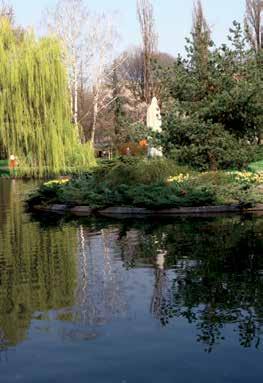 MUST
MUST
... that Laza Kostić, a great poet of the epoch of Romanticism and the first translator of William Shakespeare’s works, was born in Kovilj?
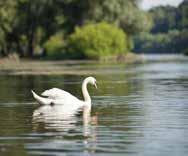
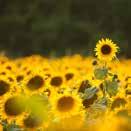

... that according to a legend, the Kovilj monastery was built on the spot where Saint Sava, the first Serbian Archbishop, reconciled the armies of the Hungarian King Andrew II and the Serbian King Stefan the First Crowned?
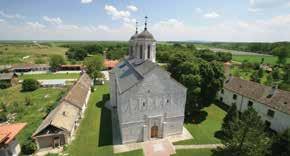
... that a small Christian army defeated the superior Ottomans in the Battle of Slankamen because, during the regrouping, the sound of Turkish military music went silent?
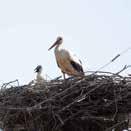

Slightly moving away from Fruška Gora, the Danube takes us to new landscapes. On its left bank, it makes “excursions” into the mainland and creates backwaters, marshes and swamps. Its right bank appears to have high loess bluffs that resemble cliffs. These soil sediments being “piled up” by the winds comprise one of the richest palaeclimatic archives in Europe. The loess profile Čot in Stari Slankamen keeps the secrets of the Ice Age and represents a museum of the geological heritage approximately 800,000 years old. The dynamics of the landscape is given a special tone by large and small river islands, and one of the most spec tacular sights is the confluence of the Tisa and Danube rivers. There are no big cities on the banks, but there are lots of lovely villages worth visiting.
In the vicinity of Novi Sad, on the left bank of the Danube, there is a village that attracts lovers of nature and rural landscapes, as well as pilgrims, named Kovilj. We recommend you to visit Kovilj monastery, which, along the centuries-old history and rich treasury, has the largest monastic economy in Serbia. Have a taste of the monastery honey, green walnut liqueur, pear liqueur, as well as the famous mulberry rakia from Kovilj. Stroll through the village which is a home to storks – birds that always choose their home carefully. The most famous nest is located on the top of the six-centuries-old oak. Also nearby the monastery, there is one of the entrances into the areas of Kovilj-Petrovaradin Marshes nature reserve. Here you can swim with a flock of swans, watch birds from the observation point, navigate the backwaters…

Even though it is not situated on the riverbank, Inđija is a Danubian town. The river flows through its territory at the waterline length of about thirty kilometres. Strands, settlements, river islands and vineyards sit along the riverbank. Krčedinska ada is one of the biggest islands in this part of the Danube and a meeting point for all kinds of nature lovers. Stari Slankamen represents a prominent place. It is worth visiting the monument of the Battle at Slankamen, taste wine made of slankamenka – an autochthonous kind of grapes and enjoy the view of the confluence of the Tisa and the Danube beside the ramparts of the Akuminkum Fortress. Tourists are also attracted by the old fishing village, Zagrad, as well as by numerous fish restaurants on the riverbank.
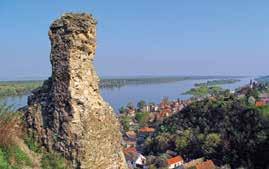

This is a town with the most numerous population of Slovaks in Serbia. You can get to know Slovak history and culture in this territory through the national setting of the “Janko Čmelik” museum. The most popular nautical centre of Pazova is Belgiška ada, a swimming pool complex in Surduk at the very bank of the Danube is the most popular summer destination. In Stari Banovci and Novi Banovici, there are two unique, private art collections: Macura Museum, with a collection of avant-garde art of the twentieth century. The museum almost hovers over a large Danube bend, whereas in its backyard, an orchard has been planted – a kind of world exhibition of a variety of apples. The second museum, Magacin Macura, is a multimedia exhibition space located at a former corn-house. A little further away from the river, in the village of Golubinci, there is the Šlos Castle, open to announced visits only. In the same village, you can also see corn cribs – handcarved barns considered masterpieces of folk architecture.

...that the Slavic name of the city was first recorded in a letter from Pope John VIII, dated 16 April 878, in which he mentioned sinful bishop Sergius from Beligrad?
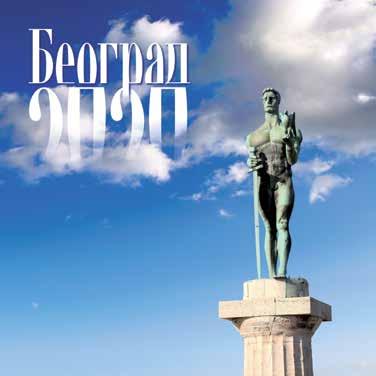

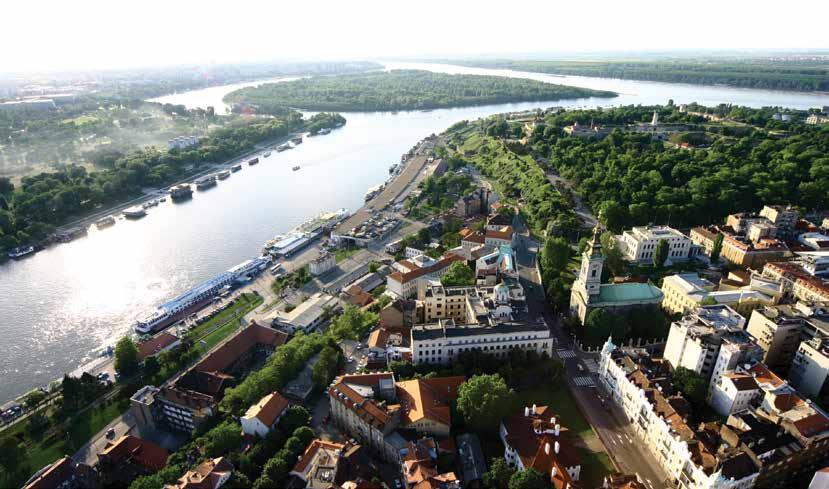
...that the National Museum in Belgrade treasures “Miroslav’s Gospel” - the oldest Serbian Cyrillic manuscript from the 12th century?

...that the Museum of Nikola Tesla in Belgrade keeps an archive of the great scientist’s works listed on the UNESCO’s “Memory of the World” List?
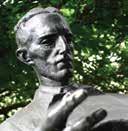
The capital of Serbia is an ancient settlement, founded at the confluence of the Sava and Danube rivers. Its position on the big intersection set the city to play the role of the “melting pot of cultures” in a busy gate between the East and the West. It was constantly the target of conquerors, was rebuilt many times, so in its history the city did not see a single “monoto nous” century. Belgrade, therefore, has a particularly lively and open spirit of the “Euro-Balkan” style. It is also called “Knight of Europe and Asia Prince.” Exciting and dynamic, it attracts tour ists who want to experience its unique ambience on the banks of rivers, rich cultural heritage, diverse entertainment and gastronomy, nightlife and numerous events.
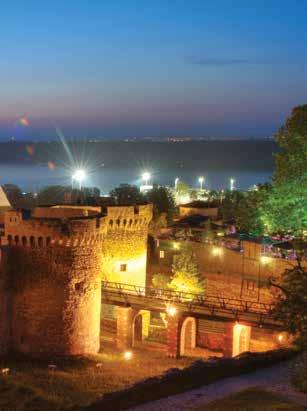
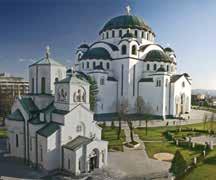
The core and the origins of the city are certainly within the ramparts of the Belgrade Fortress, above the confluence of two rivers. Visit this museum of the city’s history in the open. From the plateau at the Victor Statue, enjoy the panoramic view. Familiarise yourself with traces of ancient Singidunum, the medieval Serbian capital, the Turkish, Austrian and Serbian stronghold. Walk down the Kalemegdan park and continue down the main route – Knez Mihailova Street to the Republic Square. Discover the rich offer in this part of the city: museums, galleries, cultural institutions. Do not forget to stop by the bohemian quarter of Skadarlija. Continue your journey through Terazije to the magnificent Temple of St. Sava. We recommend you to visit the Royal Compound, located outside the city centre, as well as Savamala – a new design neighbourhood in one of the oldest parts of the city.

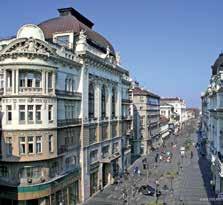
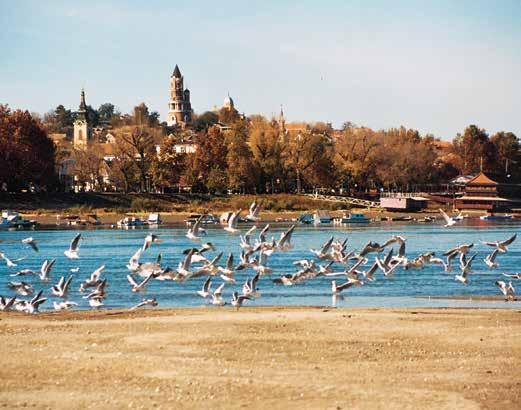
One of the neighbourhoods of the city that vividly testifies about the meeting of cultures is the old Zemun. Once a border town between the two empires, Zemun still holds an atmosphere of Austro-Hungarian times. The symbol of this “city within a city” is Gardoš tower, offering a panoramic view of the Danube, Belgrade and the picturesque town of Zemun. After a tour of valuable buildings, be sure to take a walk along the quay on the Danube. Take a break in one of the cafés and restaurants that serve fish specialities and feels an intense smell of the river. One of the pearls of the Danube in Zemun is a sandy Lido beach on the Great War Island.
A special treasure of the Belgrade waterfront are rafts, walkways, bike paths and parks. The quay at the confluence, the quay at Dorćol and Sava port are only part of the area on the banks of the Danube and the Sava rivers, where you can spend some pleasant moments. We recommend you to take a ride at tourist ships, go out to popular rafts, cycling, rest at Lake Ada Ciganlija, walks with a view of the bridges and the Belgrade Fortress... Especially vivid are picturesque rafts and stilt houses that testify to a passionate love of Belgrade residents towards the Danube and the Sava rivers.
MUST...that Vinča was discovered by Miloje Vasić – the father of Serbian archaeology – and that his discovery of the “millennial settlement” was widely reported by all prestigious world newspapers?
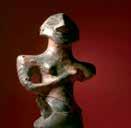
...that lady Irena Kantakuzin, wife of the Serbian ruler Đurađ Branković, was popularly called “Cursed Jerina” because she ordered that tombstones of ancient and medieval necropolises be built into the walls of the Smederevo Fortress?
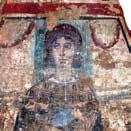
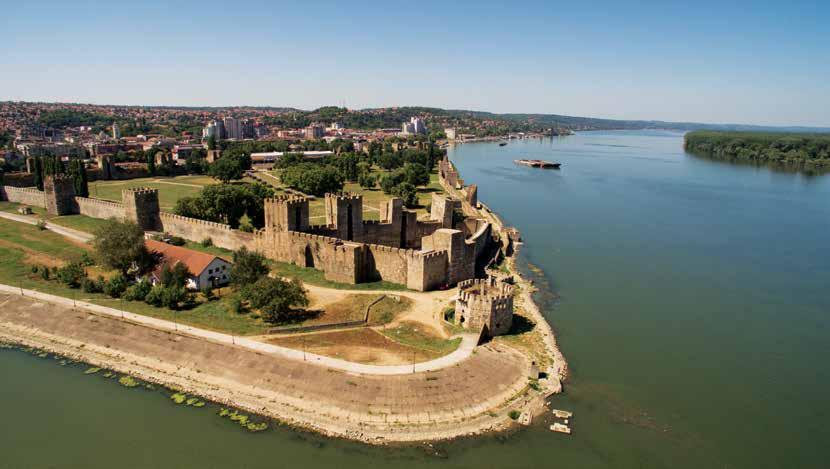
...that it was in Smederevo in 1805, under the branches of an old mulberry tree which still exists today, a Turkish commander handed over the keys of the city to Serbian leader vožd Karađorđe?
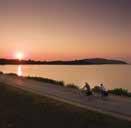
When near Belgrade, it gets connected with the Sava River, the Danube becomes a strong “giant of the plains”. It gets branchy, creating two-fold, even three-fold backwaters and large islands. In this part of its course, it constantly gets stronger, receiving waters from five other big rivers: Tamiš, Velika Morava, Mlava, Nera and the gold-bringing Pek. On its right bank there is the “capital” of vibrant Neolithic Vinča culture, and Starčevo on the left bank – an even older centre of Neolithic culture. The Romans near the mouth of the river Mlava built the city of Vi minacium, Smederevo Fortress was the last Serbian stronghold, while Ram fortress was built by the Turks to strengthen the northern border of the empire... The Danube touches these landscapes of dense historical weaving with its gentle hand. Everything is ripe abundantly here: fruit, grapes, wheat... Mixing the opposites, it leaves its left bank to winds that, near the abundance of water, created the Deliblato Sands – the only desert of Europe.
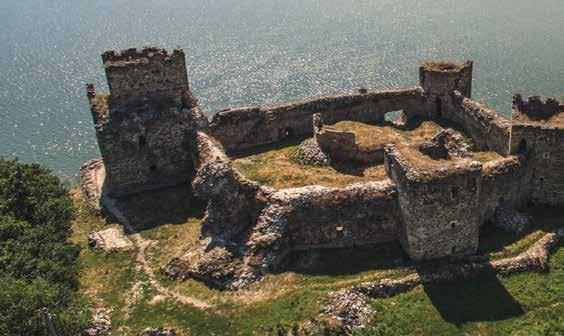
At the bank, in the profile of Belo Brdo, cultural layers deep ten metres were discovered! The settlements are “piled” one above the other, and the oldest was founded 7,600 years ago. Visit this unique location and find out what knowledge Vinča people possessed, how they shaped ceramics, wrote the characters that have to date remained unknown, how they made pricy pigment of cinnabar minerals and why this was a centre of the Neolithic world in the wider Balkan area.
Under the Turkish threat, despot Đurađ Branković was building a new capital hurriedly. Modelled after Constantinople, the city had 25 towers, but could not resist: it fell into the hands of the Ottomans in 1459, which also marked an end to the medieval Serbian state. Visit this monumental fortification in which there is a special Little Town with the despot’s palace. Visit the setting of the Fortress at the Heritage Museum. Smederevo is the centre of the famous wine region, so we recommend a tour of local wineries as well.


The capital of the Roman province of Upper Moesia was destroyed in the 5th century. It was covered by soil and it was “asleep” for almost two millennia. Excavations of the “forgotten city” brought to light many treasures. Familiarise yourself with the monogram of Christ, frescoes of the Mausoleum, jewellery, aqueducts... Skeletons of seven mammoths were discovered in Viminacium, which you can see in the “Mammoth Park”. At this site, there is a visitor centre designed as a replica of a Roman rustic villa.

Turkish traveler Evliya Çelebi recorded a legend of the Ram fortress which says that Sultan Bayezid II came to this place, took off part of the sacred garment (ihrām), sat down and said, “At the place of this ihrām, erect a fortress for me.” That is how the fortress got its place and its name. Stroll down its walls and enjoy the view of the expanse of water of the Danube River. Not far from Ram, there is a lovely town of Veliko Gradište, and beside it, in the backwaters of the Danube, there is a popular tourist centre, Silver Lake . With a diverse selection of accommodation and restaurants, there is a modern aqua park, and you can have a particularly beautiful experience on a boat cruise to the Golubac fortress, that like the tower of guards, guards the entrance to the Iron Gate.

...that, according to one legend, Byzantine Princess Jelena was detained in Hat-tower, alleviated her loneliness and sadness by cultivating pigeons, so the fortress and the city were named Golubac (in Serbian golub means pigeon)?
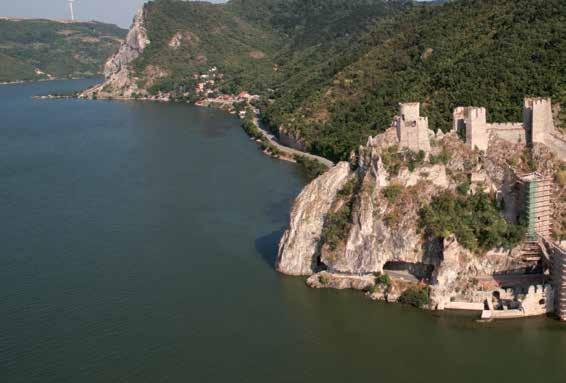

...that based a recent archaeo-astronomical surveys, it was found that Lepenski Vir was an observatory which precisely measured and monitored equinox yearly path of the Sun?


...that Trajan’s Bridge was designed by the famous architect Apollodorus of Damascus and that, in order to build it, he had to have the course of the Danube moved for the first time in history?
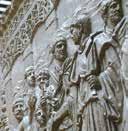
Travelling down the Đerdap (Iron Gate) gorge is an unforgettable experience. High waters of the Danube pierce through the rocks and ridges of the Carpathians, creating scenes of unique beauty. What makes the meetings with these ends even more exciting is the fact that in these dead-end regions emerged the knowledge that the European civilisation is based upon: the findings from Lepenski Vir and Rudna Glava near Majdanpek have challenged the deeply rooted belief that the roots of our culture originate from the Middle East. The glorious history of the Iron Gate is also connected to the Roman period. Along the Danube stretched the borders of the Roman Empire, known as the Danube limes. To link the defence system into a whole, it was necessary to build a road. An epic venture to break a pathway through Đerdap was completed by Emperor Trajan in the year 101, which was recorded on the fa mous Tabula Traiana. Whether you navigate down the gorge or explore it from the mainland, you will see the truthfulness of the imperator’s words: “It’s magnificent to stand on the bank of the Danube.”
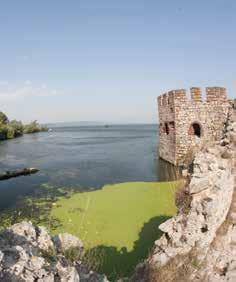

The entrance to the gorge is under the surveillance of Golubac Fortress – a symbol of medieval wars for supremacy on the Danube. Its high fan-shaped walls descend towards the riverbank. The highest dungeon – Hat-tower – is known as one – of the most beautiful ones in Europe and is a symbol of the city of Golubac. We recommend you to visit the city, take a walk along the quay and enjoy the view of the expanse of water. Here the wind blows constantly, so Golubac is also a centre of yachting in Serbia.
Along the whole course of the Danube through the Iron Gate spans the national park of the same name, known as the most beautiful and largest nature and archaeological museum of Europe. We particularly recommend tours to gazebos of Ploče and Veliki Štrbac that offer fantastic views. From the tourist offer, you can choose one of the many eco-tours, bird watching, fishing...
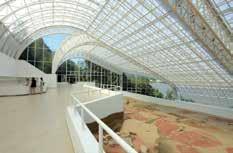

Lepenski vir is the oldest urban settlement in Europe and the centre of art of the Stone Age, which “held primacy” from 7000 to 6000 BC. The discovery of monumental sculptures and planned settlements with streets and a square echoed like a sensation worldwide. Visit this site and familiarise yourself with the works of ancient architects and artists. The Lepenski Vir mysterious sculptures of “fish-like deities” are astonishing with their expressiveness, while the sculpture Founder is considered the first portrait in the history of art.
This small town, located in the bay of the Danube, attracts with its grace. It has a very beautiful beach, sailing centre, and a pier for large cruise ships... Be sure to visit the setting in the Heritage Gallery and discover the fishing traditions of hunting on giant “river monsters” – sturgeon fish. Stop by at the ethno-complex at Captain Miša’s hill and enjoy the view of the great bend of the Danube.
There is a long list of memorable places that you can visit in this town and its surroundings: two Roman forts – Diana and Pontes, the remnants of Trajan’s bridge, the Archaeological Museum of Đerdap presenting the monuments of the whole region, the Turkish fortress Fetislam, the old bazaar, a beautiful beach... In the territory the city there is a hydropower plant “Đerdap I” - a grandiose architectural work of the late 20th century, which we recommend you to visit.
The largest town in this part of the Danube is the capital of vine growers. Be sure to try some of the famous wines that hide the soul of the Danube. The city has distinctive ambiences: the old core, the house of the famous Serbian composer Stevan Mokranjac, the Museum of Hajduk Veljko – the hero of the First Serbian Uprising, the Museum of Krajina with a valuable archaeological collection... We recommend you to visit Rajac and Rogljevo wine cellars, where you will be introduced to the best wine production. tradition.
National Tourism Organisation of Serbia www.serbia.travel
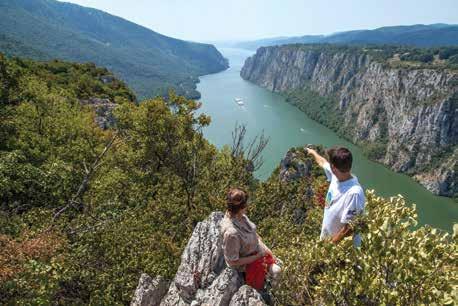
Tourism Organisation of Vojvodina www.vojvodinaonline.com
Tourist Organisation of Sombor www.visitsombor.org
Tourist Organisation of Apatin www.apatin.org.rs
Tourist Organisation of Bač www.turizam.bac.rs
Tourist Organisation of Bačka Palanka www.toobap.rs
Tourist Organisation of Novi Sad www.novisad.travel

Tourist Organisation of Sremski Karlovci www.karlovci.org.rs
Tourist Organisation of Irig www.turorgirig.org.rs
Tourist Organisation of Inđija www.indjija-tourism.com
Tourist Organisation of Stara Pazova www.turizampazova.rs
Tourist Organisation of Beograd www.tob.rs
Tourist Organisation of Smederevo www.visitsmederevo.com
Tourist Organisation of Požarevac www.turistickaorganizacijagradapozarevca.rs
Tourist Organization of Veliko Gradište www.tovg.org
Tourist Organisation of Golubac www.togolubac.rs
Tourist Organisation of Majdanpek/Donji Milanovac www.toom.rs
Tourist Organisation of Kladovo www.tookladovo.rs
Tourist Organisation of Negotin www.toon.org.rs
DUNAV U SRBIJI: 588 UTISAKA
Publisher: National Tourism Organisation of Serbia

For the publisher: Marija Labović, acting director
Editor: Ljiljana Čerović
Text: Milena Mihaljčić
Design and layout: Marija Vuksanović
Photo: Dragan Vildović, Dragan Bosnić, Branko Jovanović, Svetlana Dingarac, Stanko Kostić, Rozana Sazdić, Želimir Savić, Dragan Kurucić, Martin Candir, TOS photo archive, BelGuest Magazin photo archive, TO Novi Sad photo archive
Map of the Danube: © BelGuest Magazin

Cartography: Ljiljana Popović
Design: Miroslav Zeljug
Illustrations: Aleksandar Kapuran
Translation: Đorđe Janković
Print: Službeni glasnik, Belgrade
Circulation: 10,000 copies
Second edition, reprint, 2019 ISBN 978-86-6005-513-4
CIP
MIHALJČIĆ, Milena, 1957Danube in Serbia : 588 impressions / [text Milena Mihaljčić ; photo Dragan Vildović ... [et al.] ; translation Đorđe Janković ; ilustrations Aleksandar Kapuran]. - 2nd ed. - Belgrade : National Tourism Organisation of Serbia, 2017 (Belgrade : Službeni glasnik). - [16] str. : fotogr. u bojama ; 30 cm
Izv. stv. nasl.: Dunav u Srbiji. - Kor. nasl. - Podatak o autoru preuzet iz kolofona. - Tiraž 10.000. ISBN 978-86-6005-513-4

